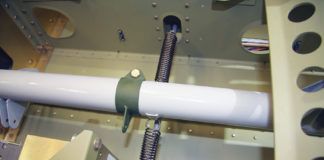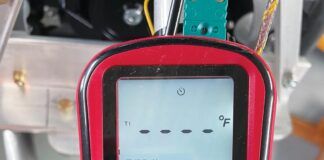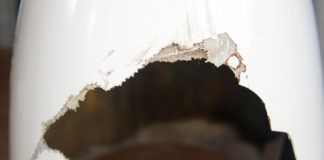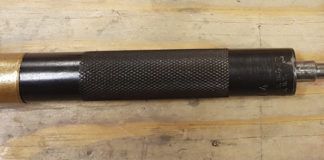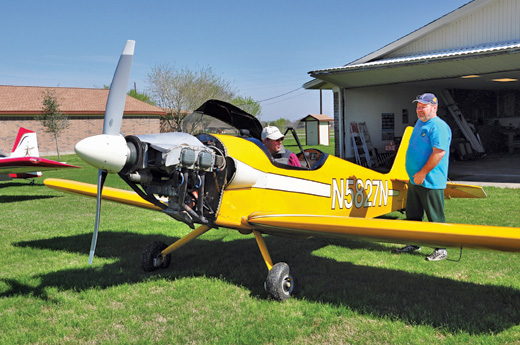
The RV-1—the progenitor of all the aircraft to come out of Van’s Aircraft, with its previous owner, Ted Filer of Baytown, Texas.
“Before we go look at my project, there’s something over here you might want to see.”
With these words began an amazing aviation journey that is still playing itself out: the resurrection of the original Richard VanGrunsven RV-1, the progenitor of one of the most popular lines of kit aircraft today. The journey began with a visit to Dunham Field on the eastern outskirts of Houston, Texas. I was there to have a look at a builder’s RV-6 project in my role as a technical counselor for the Experimental Aircraft Association. Chuck Elsey was at the point in his build where he wanted to get some eyes on the project and have a few questions answered. It was a short flight to his field from my own base just south of Houston, and since I like nothing better than crossing the city in my airplane, I knew it was going to be a delightful way to spend a Saturday morning. Little did I know what I would find tucked into the corner of a hangar at the little grass strip.
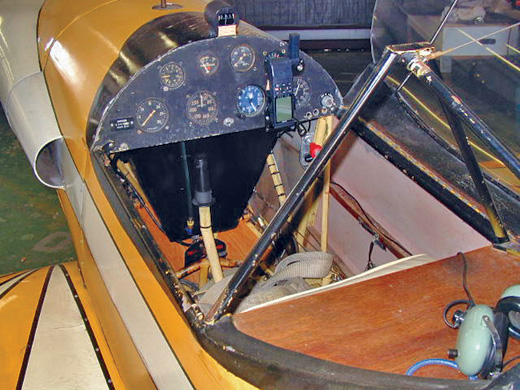
The first time the author saw the RV-1, it was tucked in a corner of a hangar at Dunham Field, east of Houston.
Elsey met me as I shut down in the parking area a few hundred yards from his T-hangar. As we shook hands and said our good mornings, we started walking down the line. He suggested that we take a peek inside the big hangar where the owner of the field kept his own planes. As we turned the corner and ducked through the half-open door, I was surprised to see a small, yellow single-seat airplane in the half-darkness. At first, I wasn’t sure what I was looking at, but then Elsey pointed to the cheek cowl where it said “RV-1.” Hmmm… now that’s pretty interesting, I thought. I wonder what the… “Holy smokes!” I exclaimed as I read the words on the canopy skirt, “Is this what I think it is?” There was painted, in neat brush letter, “Built by Dick VanGrunsven.”
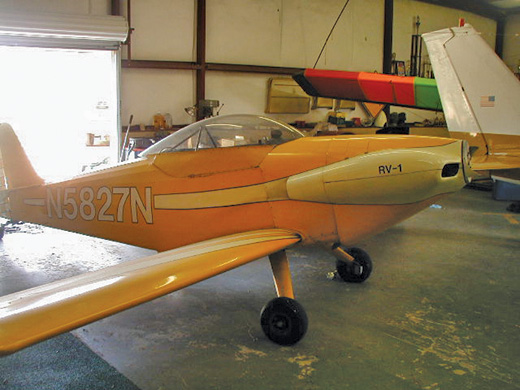
When found, the RV-1 was recovering from a minor landing mishap that damaged the landing gear and prop.
Rediscovered
This was it, the very first RV, the airplane that Richard VanGrunsven himself had built in his quest to design an airplane that embraced his ideas for “total performance.” From this little airframe he learned what he needed to build his first all-metal, clean-sheet design, the RV-3. This particular airframe had begun life as a Stits Playboy, but the modifications that VanGrunsven made after purchasing it (it had been involved in some sort of accident) were so extensive that he relicensed it with the FAA as an entirely new model. He had changed the engine, wings and tail surfaces as well as the landing gear and fuselage (he altered the turtledeck, giving it a bubble canopy).
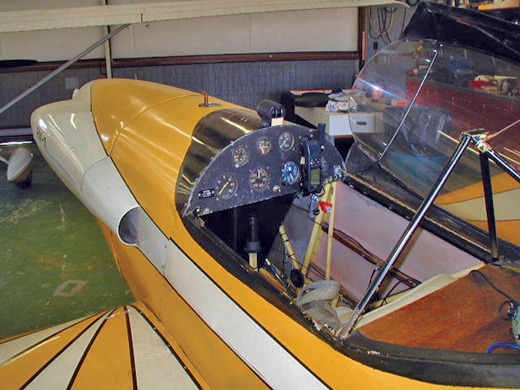
There is nothing roomy about this cockpit, leading some to wonder how the lanky Dick VanGrunsven could fit inside. Nevertheless, it appears from the logs that he flew the airplane for nearly 600 hours.
The airplane I saw that day had been damaged in a landing accident at Dunham. The RV-1’s owner, Ted Filer, had a partnership in a Cessna with Terry Dunham, owner of Dunham Field. The Cessna was kept in Dunham’s hangar at the field, and Filer used the RV-1 to commute there when he wanted to fly it. I was told that on one of these commutes to Dunham, Filer caught a bad gust at the wrong time and ended up in a ground loop, damaging the RV-1’s gear and prop. The plane had been sitting in the corner while repairs were underway, and apparently had been that way for awhile. Finding a replacement prop was proving problematic because the original was a severely over-twisted metal prop that no one today would duplicate. Aside from the missing prop, the airframe looked sound, and I snapped a few pictures to prove that I hadn’t been dreaming. This was the long-lost RV-1!
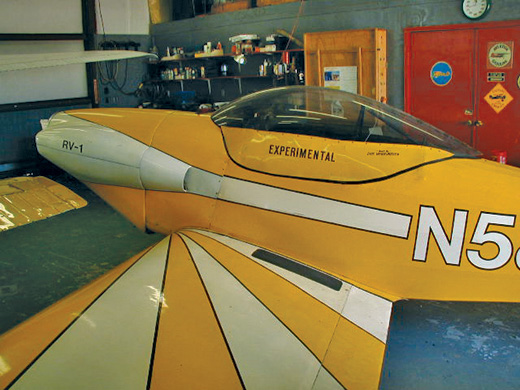
Note the open rear ends of the cheek cowls. The effect on cooling is unknown; the airplane had been fitted with a plenum when it was found, changing the airflow considerably.
Spreading the News
I posted news of my find on the Van’s Air Force forum’s web site, a place for all things RV, and received more than a few “Wow!” comments from folks knowledgeable about the line. The most interesting response, however, came from a local aviation acquaintance, Ernie Butcher, an RV-8 owner who is the friendly kind of guy who knows everyone. He had long been involved in Bruce Bohannon’s record-setting Flying Tiger program, and had been looking into the possibility of developing an aviation museum tied to a youth educational program, giving them a step up into the aviation world. His original plan called for the eventual collection of at least one of every Van’s-designed aircraft, and when he found out about the original RV-1 discovered so close to home, he sent me a message brimming with hope. Perhaps a group could be formed to purchase the airplane and restore it for public view?
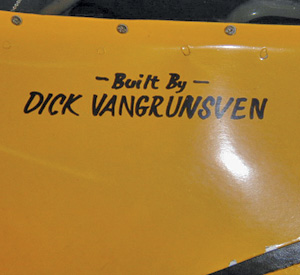
The signature that started the author’s quest, proof (with corroboration from the man himself) that this was indeed Van’s first creation.
Butcher is not one to idly speculate on the future; he is the kind who makes things happen. The problem was, we had no contact information for the owner. We talked about the potential for doing something about acquiring the aircraft, but the idea lay fallow for some time. It did not go away, however, and eventually, another tip from Chuck Elsey lead us to RWJ Airpark in Baytown, Texas, where the plane had been moved to the home of its owner, and that it might even be for sale.
I was otherwise occupied at the time, so Butcher took the lead and contacted Ted Filer, a pleasant gentleman who clearly understood the significance of his RV-1, and who obviously enjoyed flying it. He had repaired the airplane well enough to get it back home, but was having difficulty with the engine. He had owned and flown the airplane for close to 20 years, flying it as far as Key West. When Butcher first met with Filer, he wasn’t interested in selling, but the two stayed in touch over a period of close to two years, and eventually, the phone call came indicating that it was time for the airplane to move on.
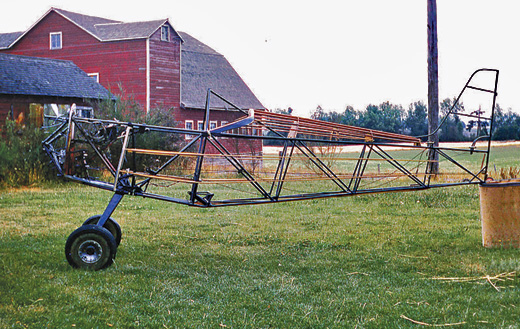
The re-contoured fuselage frame of the RV-1 featured a bubble canopy, new gear legs, and the center section for a cantilevered wing.
In the years that Butcher and I were pursuing the airplane, we naturally opened up a dialogue with its creator. It was never our intent to keep the airplane for ourselves, but rather to help it on its way to whoever made sense. We initially thought that Richard VanGrunsven and/or Van’s Aircraft might want to see it returned home after all these years. We discussed various ideas, but over time, we all realized that while VanGrunsven had a strong desire to have the airplane back and see it restored, it was unlikely that he and the folks at the factory would have time to actually carry out such a plan. Besides, as VanGrunsven pointed out, the RV-1 came and went long before he founded Van’s Aircraft, so it really wasn’t a company project. Certainly, he would take it back if that was the best option, but Butcher and I wanted to look at alternatives.
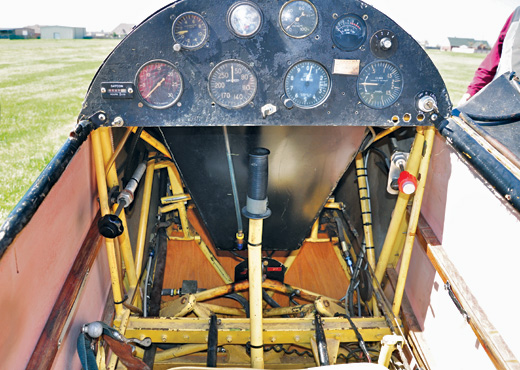
The cockpit could never be considered pretty, but it wasn’t supposed to be. It was a development project throughout the time that VanGrunsven (“Van”) owned it, and it served its purpose well.
A Plan Takes Shape
Our goal was to bring it back to flying condition and housed in a place of honor where all could see it. Fortunately, this was not Butcher’s first time dealing with historical aircraft and museums—Bruce Bohannon’s first record-setter “Pushy Galore” hangs in the EAA museum in Oshkosh, Wisconsin. When Butcher approached EAA with the prospect of the RV-1 ending up in the Oshkosh museum, the response was quick and positive: Without a doubt, they wanted it there. Butcher and I wanted the pro-ject to be a community effort, so we decided that a nonprofit corporation should own the aircraft and be responsible for delivering it to the museum. Thus, Friends of the RV-1 was born.
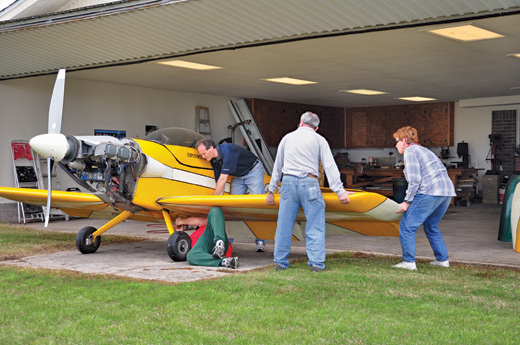
The RV-1 begins its journey toward restoration as friends remove the wings for a trailer ride. The engine needed work before the plane could be flown.
Our next big decision was how to get the aircraft in flying condition, since our goal was to fly the airplane to the museum under its own power, on its own wings. While the aircraft was not in terrible shape, it was a bit worn around the edges after decades of flying. The engine needed some work to make it reliable, and it was our desire to return the airplane to a configuration representative of how it looked when VanGrunsven owned it. Changes had been made to it over the years. For instance, the wheelpants had been removed, the canopy replaced, and the cowling modified. Along with fixing the powerplant and “remodifying” the configuration, clean-up and careful inspection was also warranted. All of this was going to take time and effort. Who was going to do the work?
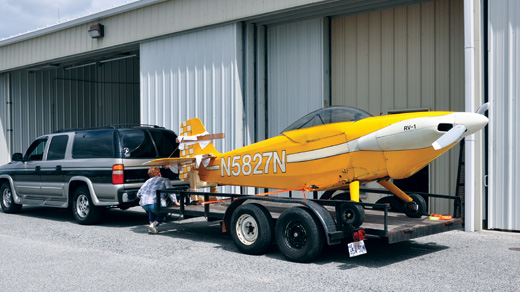
The RV-1 arrives at its first temporary home: Ellington Field, southeast of Houston, Texas.
I had the perfect answer: What better gift could the RV community give to the man who started it all than to contribute their time and talents to bringing this airplane back to life? We could certainly have chosen a shop to do all the work, but the vast community of RV builders and owners had within it more than enough talent and experience to do the job, and the desire as well. The buzz throughout the community began when we announced the acquisition of the airplane and hasn’t stopped since. This job was going to be something special.
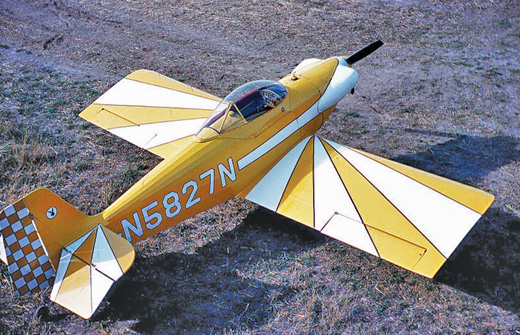
Van changed the shape of the cheek cowls many times. Can you spot the other changes?
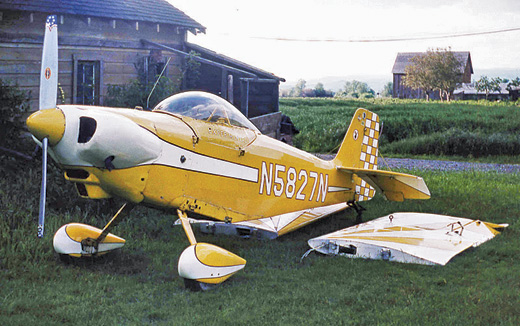
The RV-1 is being prepared for its new wings. Note the attach points for the old lift struts underneath the canopy rail.
And…Action!
On March 14, 2011, the RV-1 began its official journey into history. It was disassembled by a small team of people, including its previous owner, and transported to temporary quarters at Ellington Field in Houston. It resided there while arrangements were made for a home base for the restoration project. This turned out to be RV Central, a builder-assistance center on the outskirts of Fort Worth, Texas, owned by Jay Pratt. Transportation services were provided by Partain Transport, a company that specializes in transporting RV kits around the country in a fleet of custom-made trailers. By June 6, 2011, the airplane was safely ensconced in its new home, and preparations for restoration were underway. Partain’s donation of transportation started a contribution snowball from companies supplying parts and services to the RV community. Once the word got out, vendors rapidly lined up to provide parts and accessories, and volunteers were calling to offer their time and talents, It was clear that the RV world had embraced this early ancestor with open arms.
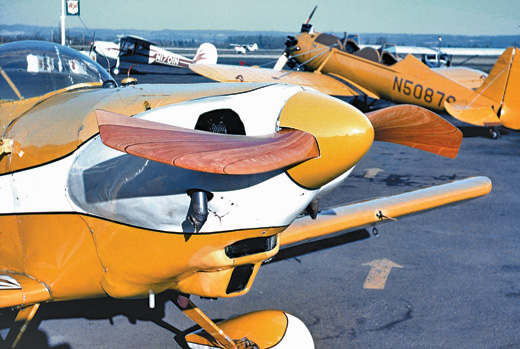
The RV-1 sported many different faces and configurations while Van tweaked it for better performance. Here it is with an early cowl shape and heavily contoured wood prop.
The restoration of the RV-1 is now well underway, with completion expected in the first part of 2012. The goal is to have it flying before Sun ‘n Fun so it can tour the country from April though July’s AirVenture. The annual summer gathering of the EAA will recognize the man who started it all, and the airplane with which he started it will be there in his honor. Until then, look for the opportunity to see the RV-1 yourself as it visits fly-ins and EAA chapter gatherings during the early summer months.
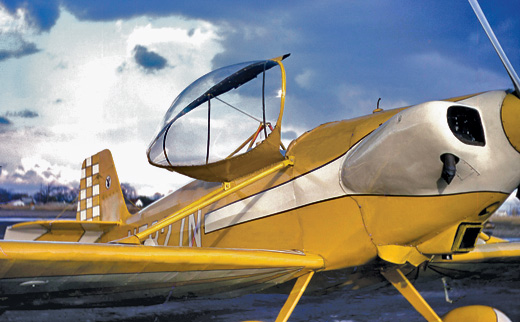
In this version, the old wings remained, along with the old cowling, but the new bubble canopy sure was sporty!
For more information on the restoration project and flight program, visit www.rv-1.org. Opportunities for involvement are many, and Friends of the RV-1 is always looking for volunteers.

